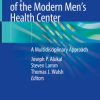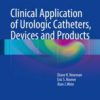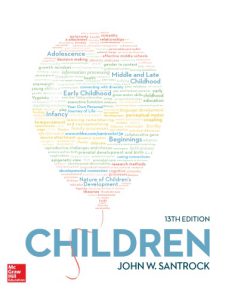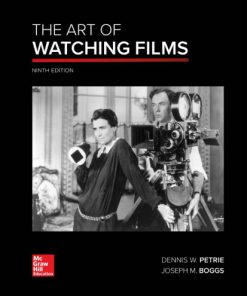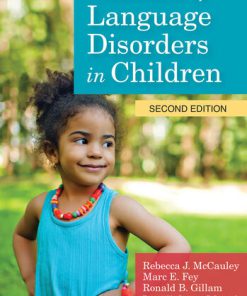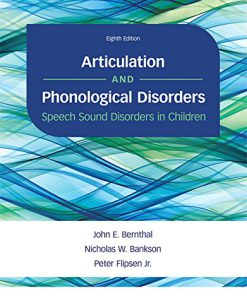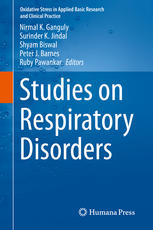Kendig Disorders of the Respiratory Tract in Children 9th Edition by Robert Wilmott, Andrew Bush, Robin Deterding, Felix Ratjen, Peter Sly, Heather Zar, Albert Li ISBN 9780323555944 0323555942
$50.00 Original price was: $50.00.$25.00Current price is: $25.00.
Kendig Disorders of the Respiratory Tract in Children 9th Edition by Robert Wilmott, Andrew Bush, Robin Deterding, Felix Ratjen, Peter Sly, Heather Zar, Albert Li – Ebook PDF Instant Download/Delivery: 9780323555944 ,0323555942
Full download Kendig Disorders of the Respiratory Tract in Children 9th Edition after payment
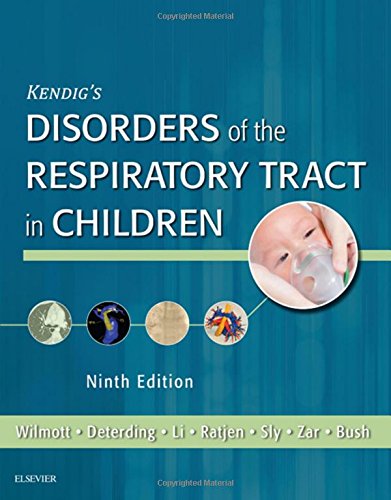
Product details:
ISBN 10: 0323555942
ISBN 13: 9780323555944
Author: Robert Wilmott, Andrew Bush, Robin Deterding, Felix Ratjen, Peter Sly, Heather Zar, Albert Li
Now in a fully updated 9th Edition, Kendig’s Disorders of the Respiratory Tract in Children, by Drs. Robert Wilmott, Andrew Bush, Robin Deterding, and Felix Ratjen, continues to provide authoritative, evidence-based information to residents, fellows, and practitioners in this wide-ranging specialty. Bringing key knowledge from global experts together in one easy-to-understand volume, it covers everything from the latest basic science and its relevance to today’s clinical issues, to improving patient outcomes for the common and rare respiratory problems found in newborns and children worldwide.
Kendig Disorders of the Respiratory Tract in Children 9th Edition Table of contents:
Section 1 General Basic and Clinical Considerations
1 The History and Physical Examination
The History
The Physical Examination
Common Signs and Symptoms of Chest Disease in Children
Conclusion
Suggested Reading
References
2 Molecular Determinants of Lung Morphogenesis
Introduction
Organogenesis of the Lung
Molecular Mechanisms Directing Lung Development
Development of the Pulmonary Host Defense Systems
Gene Mutations in Lung Development and Function
Summary
References
3 Basic Genetics and Epigenetics of Childhood Lung Disease
Types of Genetic Variation
Technologies to Identify Genetic Variation
Interpretation of Genetic Variation
When to Consider Clinical Genetic Testing
Research Study Designs to Attribute Genetic Variation to Disease
Epigenetics—Terminology and Technology
“Multi-Omics” Approaches to Refine Genotype-Phenotype Associations
Websites
References
4 Environmental Contributions to Respiratory Disease in Children
Vulnerability of Children to Adverse Environmental Exposures
Environmental Contributions to Acute Respiratory Illness and Pneumonia
Environmental Contributions to Asthma
Summary
References
5 The Surfactant System
Surfactant Composition and Metabolism
Surfactant Metabolism and Secretion
Alveolar Life Cycle of Surfactant
Surfactant Function
Pressure-Volume Curves
Host Defense Functions of Surfactant
Surfactant Deficiency
Surfactant Treatment of Surfactant Deficiency
References
6 The Structural and Physiologic Basis of Respiratory Disease
Normal Lung Anatomy and Cell Function
Airways
Alveolar Region
Pulmonary Vascular System
Lymphatic System
Innervation of the Lung
Interstitium
Growth and Development of the Lung
The Lung at Birth
Postnatal Lung Growth
Ventilation and Mechanics of Breathing
Definitions and Symbols
Elastic Recoil of the Lung
Compliance of the Lung
Elastic Properties of the Chest Wall
Lung Volumes
Regional Lung Volumes
Dynamic (Flow-Resistive) Properties of the Lung
Distribution of Ventilation
Pulmonary Circulation
Pulmonary Vascular Pressures
Pulmonary Vascular Resistance
Distribution of Blood Flow
Methods of Evaluating the Pulmonary Circulation
Muscles of Respiration
Gas Exchange
Alveolar Ventilation
Dead Space
Diffusion
Shunt and Ventilation-Perfusion Relationships
Systemic Gas Transport
Oxygen Therapy
Carbon Dioxide Transport and Acid-Base Balance
Tissue Respiration
Regulation of Respiration
Sensory Feedback System
Metabolic Functions of the Lung
References
7 Biology and Assessment of Airway Inflammation
Introduction
Allergic Inflammation
Acute Inflammation
Chronic Inflammation
Inflammatory Cells
Structural Cells as Sources of Mediators
Inflammatory Mediators
Neural Mechanisms
Transcription Factors
Antiinflammatory Mechanisms
Direct Measurements of Airway Inflammation
Noninvasive Assessment of Airway Inflammation
Is AHR an Inflammatory Surrogate?
Other Potential Indirect Inflammatory Markers
Is There a Role for Assessing Inflammation in Pediatric Respiratory Disease?
Therapeutic Implications
Conclusion
References
8 Lung Defenses
Intrinsic Lung Defenses
Innate Lung Defenses
Adaptive Lung Defenses
Role of Programmed Cell Death and “Clearing the Garbage” in Lung Homeostasis
Summary
References
9 Bronchoscopy and Bronchoalveolar Lavage in Pediatric Patients
Instrumentation
Techniques for Bronchoscopy
Anesthesia for Bronchoscopy
Indications for Diagnostic Bronchoscopy
Contraindications to Bronchoscopy
Bronchoalveolar Lavage
Diagnostic Techniques Other Than Bronchoalveolar Lavage
Therapeutic Bronchoscopy
Complications of Bronchoscopy
Economic Aspects of Bronchoscopy
References
10 Diagnostic Imaging of the Respiratory Tract
Plain Radiography
Specific Features of the Chest Radiograph in Children
Systematic Review of the Chest Radiograph
Fluoroscopic Techniques
Computed Tomography
Isotropic Computed Tomography
Data Processing
Review of Findings
Pitfalls
Radiation Dose
High-Resolution Computed Tomography
Controlled Ventilation Technique
Interpretation
Angiography
Magnetic Resonance Imaging
Endobronchial Ultrasonography
Ultrasonography
Radionuclide Imaging
Conclusion
References
11 Pulmonary Function Tests in Infants and Children
Introduction
Measurement of Lung Volumes
Measurement of Diffusing Capacity of Carbon Monoxide
Measurement of Forced Expiration
Measurement of Resistance and Compliance
Measurement of Gas Mixing
References
12 Exercise and Lung Function in Child Health and Disease
The Biological Importance of Physical Activity in the Growing Child
From the Playground to the Bench to the Physician’s Office
Physiologic Response to Progressive Exercise Testing
The Challenge of Scaling Cardiopulmonary Exercise Testing to Body Mass in Children and Adolescents and the Special Case of Obesity
Development of Physiological Responses to Exercise in Children and Adolescents and Predicting Cardiopulmonary Health Across the Lifespan
Searching for Normal Values in Pediatric Cardiopulmonary Exercise Testing
Asthma and Exercise
Physical Activity, Exercise and Cystic Fibrosis
Physical Activity, Exercise, and Lung Disease of Prematurity
Exercise at Altitude in Child Health
High Altitude and Children With Chronic Lung Disease
Exercise and Laryngeal Obstruction
Toward the Future: Exercise in the Age of Omics
References
13 Integrating Patient-Reported Outcomes Into Research and Clinical Practice
Definition of a Patient-Reported Outcome
Development and Utilization of Patient-Reported Outcomes
Health-Related Quality of Life Measures
Developmental Considerations
Use of Proxy-Respondents
Clinical Utility
Summary
Review of Disease-Specific Respiratory Health-Related Quality of Life Measures
Conclusions and Future Directions
References
14 Transition From Pediatric to Adult Care
Introduction
What Is Transition?
Why Is Transition Important?
Transition: A Practical Approach
Barriers to Transition
Summary
References
15 Long-Term Consequences of Childhood Respiratory Disease
Introduction
How the Lung Develops in Health and Disease
The End-Stage—Chronic Obstructive Pulmonary Disease
Long-Term Consequences of Specific Diseases
Summary and Conclusions
References
16 Drug Administration by Inhalation in Children
Advantages and Disadvantages of Aerosols for Drug Delivery
What Is a Therapeutic Aerosol?
Principles of Aerosol Delivery
Assessment Techniques
Aerosol Devices
Dosage Considerations
Advice and Training for Parents
Progress Toward the Ideal Delivery System
References
17 Physical Therapies in Pediatric Respiratory Disease
General Principles of Physiotherapy
Role of Physiotherapy in Pediatric Respiratory Disease
Respiratory Physiotherapy in Specific Conditions
Conditions Not Generally Amenable to Physiotherapy
Summary
References
18 Congenital Lung Disease
Introduction
Clinical Approach
The Size of the Problem: Epidemiology of Congenital Malformations of the Lung
Antenatal Diagnosis and Management of Congenital Lung Disease
Specific Diagnoses: Congenital Diaphragmatic Hernia
Specific Diagnoses: Upper Respiratory Tract Atresias
Specific Postnatal Problems: Congenital Abnormalities of the Upper Airway
Examination of a Child Presenting in the Clinic Setting
The Emergent/Marginal Airway and Difficult Intubations
Extubation Difficulties/Failed Extubation
Congenital Abnormalities of the Larynx
Vocal Cord Paralysis
Congenital Abnormalities of the Trachea
Specific Problems: Congenital Bronchial Abnormalities
Specific Problems: Parenchymal Lesions
Specific Problems: Overexpansion, Aplasia and Ectopia
Specific Problems: Abnormal Connections Between the Bronchial Tree and Other Structures
Specific Problems: Congenital Disease of the Pulmonary Arterial Tree
Specific Problems: Congenital Disease of the Pulmonary Venous Tree
Specific Problems: Abnormalities of the Connections Between the Pulmonary Arterial and Venous Trees
Specific Problems: Congenital Disease of the Lymphatic Tree
Specific Problems: Congenital Disorders of the Chest Wall
Specific Problems: Congenital Cardiac Disorders
Specific Problems: Multisystem Congenital Disorders That Affect the Lung
Role of Specific Investigations
Summary and Conclusions
References
19 Respiratory Disorders in the Newborn
Initiation of Respiration at Birth
Fetal Lung Fluid
Respiratory Depression at Birth
Delivery Room Resuscitation
Ventilatory Control
Respiratory Distress Syndrome
Transient Tachypnea of the Newborn
Meconium Aspiration Syndrome
Acute Respiratory Distress Syndrome
Early-Onset Pneumonia
Late-Onset Pneumonia
Aspiration Pneumonia
Interstitial Lung Disease
Persistent Pulmonary Hypertension of the Newborn
Pulmonary Hypertension in Bronchopulmonary Dysplasia
Pneumothorax
Pneumomediastinum
Pneumopericardium
Pulmonary Interstitial Emphysema
Secondary Pulmonary Hypoplasia
Patent Ductus Arteriosus
Pulmonary Edema
Pulmonary Hemorrhage
Upper Airway Obstruction
Gastroesophageal Reflux
References
20 Bronchopulmonary Dysplasia
Introduction
Definition
Epidemiology
Etiology
Pathogenesis
Pathophysiology
Clinical Findings
Prevention
Treatment
Prognosis
Summary
References
21 Children Dependent on Respiratory Technology
Introduction
Epidemiology
Goals of Therapy
General Considerations for Home Care
Treatment of Chronic Respiratory Failure
Ancillary Equipment
Patient Follow-Up
Outcomes
Summary
References
Section 2 Infections of the Lung
22 Microbiological Diagnosis of Respiratory Illness
Respiratory Pathogens and Syndromes
Use of the Clinical Microbiology Laboratory
Microbiome
Future Prospects
References
23 Acute Infections That Produce Upper Airway Obstruction
Viral Laryngotracheobronchitis
Diagnosis and Differential Diagnosis
Epiglottitis
Bacterial Tracheitis
Diphtheria
Retropharyngeal Abscess
Peritonsillar Abscess (Quinsy)
Infectious Mononucleosis
References
24 Bronchiolitis
Epidemiology
Etiology
Pathology/Pathogenesis
Clinical Features
Diagnosis and Differential Diagnosis
Management and Treatment
Prevention
Prognosis
References
25 Pneumonia in Children
Epidemiology and Etiology
Pathogenesis
Clinical Features
Etiologic Diagnosis
Diagnosis and Differential Diagnosis
General Management
Treatment With Antimicrobials
Slowly Resolving Pneumonia
Major Clinical Complications
Prevention
Prognosis
References
26 Bronchiectasis and Chronic Suppurative Lung Disease
Introduction
Definitions
Bronchiectasis and Chronic Suppurative Lung Disease
Protracted Bacterial Bronchitis
References
27 Influenza
Introduction
Epidemiology
Pathology/Pathogenesis
Clinical Features
Diagnosis and Differential Diagnosis
Management and Treatment
Prevention
Prognosis/Outcome
References
28 New and Emerging Infections of the Lung
Introduction
Middle East Respiratory Syndrome Coronavirus
Human Metapneumovirus
Rhinovirus C
Adenovirus
References
29 Tuberculosis
Epidemiology
Mycobacteriology
Immunology
Pathophysiology
Clinical Features
Diagnosis
Tests of Infection
Laboratory Diagnosis
Treatment
Control and Prevention
References
30 Nontuberculosis Mycobacterial Disease
Microbiology
Epidemiology
Acquisition and Potential for Transmission
Apparent Increase in Nontuberculous Mycobacteria Vulnerable Populations and in the Modern Environment
Clinical Manifestations of Nontuberculous Mycobacteria Pulmonary Disease
Diagnosis of Nontuberculous Mycobacteria Pulmonary Disease
Management and Treatment
Outcomes
References
31 The Pulmonary Mycoses
Introduction
Antifungal Drugs
Endemic Mycoses
Pulmonary Mycoses Primarily Seen in Hosts With Impaired Immunity
References
32 Pertussis and Other Bordetella Infections of the Respiratory Tract
Epidemiology
Etiology
Pathology/Pathogenesis
Clinical Features
Imaging, Pulmonary Function Testing, Laboratory Findings
Diagnosis and Differential Diagnosis
Management and Treatment
Prevention
Prognosis
References
33 Toxocariasis, Hydatid Disease of the Lung, Strongyloidiasis, and Pulmonary Paragonimiasis
Toxocariasis
Echinococcosis (Hydatid Disease)
Strongyloidiasis
Pulmonary Paragonimiasis (Lung Fluke Disease)
References
Section 3 Pulmonary Disease in the Intensive Care Unit
34 Principles of Mechanical Ventilation
History
Indications for Mechanical Ventilation
Composition of a Mechanical Ventilator
Modes of Ventilation
Noninvasive Ventilation
High-Frequency Ventilation
Neurally Adjusted Ventilator Assistance
Hemodynamic Effects of Mechanical Ventilation
Mechanical Ventilation in Specific Conditions
Management During Mechanical Ventilation
Complications of Mechanical Ventilation
Conclusion
References
35 Childhood Pulmonary Arterial Hypertension
Introduction
Definition and Classification
Epidemiology and Etiology
Neonatal Pulmonary Hypertension
Associated Pulmonary Arterial Hypertension With Congenital Heart Disease
Management
Oxygen
Additional Pharmacotherapy: Cardiac Glycosides, Diuretics, Antiarrhythmic Therapy, Inotropic Agents, and Nitrates
Atrial Septostomy
Lung Transplantation
Conclusions
References
36 Pulmonary Edema
Anatomic Considerations
Factors Responsible for Fluid Movement
Mechanisms That Cause Pulmonary Edema
Clearance of Pulmonary Edema Fluid
Pathophysiologic Consequences of Edema
Clinical Presentation
Clinical Disorders Causing Pulmonary Edema
Therapy
References
37 Respiratory Complications of Intensive Care
History of Pediatric Intensive Care
Indications for Intubation and Mechanical Ventilation
Ventilation Strategies
Complications of Mechanical Ventilation
Conclusion
References
38 Acute Respiratory Distress Syndrome
Epidemiology
Etiology
Outcome
Definition and Diagnosis
Pathophysiology
Treatment
Summary/Conclusion
References
39 Pulmonary Disease Associated With Congenital Heart Disease
Introduction
Airway Compression Due to Vascular Rings and Slings
Pulmonary Hypertension and Postoperative Pulmonary Hypertensive Crisis
Pulmonary Vein Stenosis
Reperfusion Pulmonary Edema in Children Undergoing Procedures for Tetralogy of Fallot, Pulmonary Atresia and Multiple Aortopulmonary Collateral Arteries
Pulmonary Disease Associated With the Fontan Repair of Single Ventricle Physiology
Pulmonary Complications Related to Cardiac Surgery and Cardiopulmonary Bypass
Conclusion
References
40 Lung Injury From Hydrocarbon Aspiration and Smoke Inhalation
Epidemiology
Etiology
Pathology
Pathophysiology
Clinical Findings
Diagnosis and Differential Diagnosis
Management and Treatment
Prevention
Prognosis
Hydrocarbon “Sniffing”
Respiratory Complications of Smoke Inhalation
The Relationship of Pulmonary Injury From Smoke Inhalation to the Pulmonary Complications of Surface Burns
References
41 Drowning
Definitions
Epidemiology
Drowning Sequence
Sequelae of Submersion/Immersion Events
References
Section 4 Asthma
42 The Epidemiology of Asthma
Overview
Epidemiologic Approaches to the Study of Asthma
Defining Asthma in Epidemiologic Studies
The Prevalence of Asthma
Severity and Mortality
Quality of Life and Economic Impact of Asthma
Phenotypic Variation
The Genetics of Asthma
Environmental Influences on Asthma
Conclusions
References
43 The Immunopathogenesis of Asthma
Altered Pulmonary Immunity in Asthma Inception
Cells, Molecules, and Cytokines Involved in Pediatric Allergic Asthma
School-Age Allergic Asthma: Pathology and Mechanisms
The Clinical Relevance of Eosinophilic Inflammation in School-Age Asthma
Essential Role of Structural Airway Cells in Pulmonary Immunity and Asthma Pathogenesis
Preschool Wheeze: A Unique Maturing Immune Environment
Specific Clinical Scenarios for Consideration
Summary
References
44 Asthma in the Preschool Age Child
Epidemiology and Burden
Diagnosis
Natural History
Pathology
Treatment
References
45 Wheezing in Older Children
Introduction
Pathology
Pathophysiology
Inflammatory Cell Biology and Asthma Etiology and Pathophysiology
Natural History and Prognosis
Asthma Mortality
Diagnosis of Asthma
Nonallergic Hypersensitivity to Drugs and Chemicals
Laboratory Diagnosis
Lung Function Tests
Bronchial Challenge Tests
Exercise Challenge Test
Other Tests
Therapeutic Considerations
Classification of Asthma
Pharmacologic Management of Asthma in Children Older Than 5 Years of Age
Reliever Medications: Short-Acting β Agonists
Anticholinergic Agents
Controller Medications
Other Inhaled Corticosteroids
Systemic Corticosteroids
Leukotriene Antagonists
Long-Acting Muscarinic Antagonists
Management of Chronic Asthma
Intermittent Asthma
Mild Persistent Asthma
Moderate Persistent Asthma
Severe Persistent Asthma
Holding Chambers and Spacer Devices
Peak Expiratory Flow Rate Monitoring
Nonpharmacologic Measures
Management of an Acute Episode
Hospital Management of Asthma
General Treatment
References
46 Severe Asthma
Overarching Principles
Definitions
A New Approach: Airways Disease Deconstructed and Placed in Context
Initial Evaluation: Problematic Severe Asthma
Problematic Severe Asthma: Not Asthma at All
Airway Disease in Context: Asthma Plus (Extrapulmonary Comorbidities)
Airway Disease in Context: Environmental/Lifestyle (Difficult Asthma)
Increasingly Important in the Assessment Process: A Hospital Admission
Difficult Asthma: Summary
Severe, Therapy-Resistant Asthma: Deconstructing the Airway Disease
Assessment of Persistent Airflow Limitation
Treatment of Severe, Therapy-Resistant Asthma
Monitoring the Child With Severe, Therapy-Resistant Asthma on Treatment
Summary and Conclusions
References
47 The Influence of Upper Airway Disease on the Lower Airway
Allergic Rhinitis and Asthma
Chronic Rhinosinusitis and Asthma
References
48 Modern Molecular Therapies for Application in Managing Childhood Asthma
Introduction
Allergen Immunotherapy
Omalizumab
Mepolizumab
Other Biologics
Conclusion
References
Section 5 Cystic Fibrosis
49 Genetics and Pathophysiology of Cystic Fibrosis
CFTR Gene
CFTR Protein
Genotype-Phenotype Correlations
Pathophysiology
Cystic Fibrosis Animal Models
Characteristics of Systemic Disease
Other Disorders Related to the Cystic Fibrosis Transmembrane Conductance Regulator
References
50 Diagnosis and Presentation of Cystic Fibrosis
Diagnostic Criteria for Cystic Fibrosis
Making the Diagnosis of Cystic Fibrosis
Antenatal Testing for Cystic Fibrosis
Neonatal Screening for Cystic Fibrosis
The Phenotypic Spectrum of Cystic Fibrosis—Influencing Factors
Cystic Fibrosis Phenotypes
References
51 Pulmonary Disease in Cystic Fibrosis
Epidemiology
Etiology and Pathogenesis
Clinical Features
Management and Treatment
Prognosis
Conclusions
References
52 Nonpulmonary Manifestations of Cystic Fibrosis
Pancreatic Disease
Fibrosing Colonopathy
Pancreatitis
Hepatobiliary Disease
Gallbladder Disease
Infertility
Cystic Fibrosis Transmembrane Conductance Regulator Actions in the Small Bowel
Constipation
Distal Intestinal Obstruction Syndrome
Rectal Prolapse
Gastric Emptying and Small Bowel Motility
Small Intestine Bacterial Overgrowth
GI Cancers
Nutrition
Cystic Fibrosis–Related Diabetes
Conclusion
References
53 Molecular Therapies for Cystic Fibrosis
Introduction
Small Molecule Cystic Fibrosis Transmembrane Conductance Regulator Modulators
Read-Through Agents
Potentiators
Correctors
Combination Therapy
Other Noncystic Fibrosis Transmembrane Conductance Regulator–Based Approaches
Cystic Fibrosis Gene Therapy
Evaluating Therapies Targeting the Basic Defect in Clinical Trials
Challenges for the Field
Summary
Declaration of Interests
References
Section 6 Interstitial Lung Disease
54 New Concepts in Children’s Interstitial and Diffuse Lung Disease
New Concepts, Terminology, and Classification
General Diagnostic Approach
Resources for Families and Physicians
References
55 Rare Childhood Lung Disorders
Introduction
Respiratory Disorders of the Lymphatic System
Lymphangioleiomyomatosis
Pulmonary Alveolar Microlithiasis
Ataxia Telangiectasia
Gaucher Disease
Niemann-Pick Disease
Neurofibromatosis
Dyskeratosis Congenita
Hermansky-Pudlak Syndrome
Alpha-1 Antitrypsin Deficiency
Summary
References
56 Childhood Interstitial Lung Disease Disorders More Prevalent in Infancy
Overview
Alveolar Capillary Dysplasia With Misalignment of Pulmonary Veins
Radiologic Findings
Lung Growth Abnormalities Presenting as Childhood Interstitial Lung Diseases
Radiologic Findings
Pulmonary Interstitial Glycogenosis
Neuroendocrine Cell Hyperplasia of Infancy
Summary
References
57 Lung Diseases Associated With Disruption of Pulmonary Surfactant Homeostasis
Epidemiology
Etiology
Pathology/Pathogenesis
Clinical Features of Surfactant Production Disorders
Diagnosis and Differential Diagnosis
Management, Treatment, and Prognosis
Summary
References
58 Pulmonary Involvement in the Systemic Inflammatory Diseases of Childhood
Overview of Chapter
Juvenile Idiopathic Arthritis
Systemic Lupus Erythematosus
Juvenile Dermatomyositis
Scleroderma
Mixed Connective Tissue Disease
Sarcoidosis
Childhood Vasculitides
Granulomatosis With Polyangiitis
Other Systemic Inflammatory Diseases With Significant Pulmonary Involvement
Clinical Approach to Diagnosis and Management of Pulmonary Involvement in the Systemic Inflammatory Diseases of Childhood
References
59 Lung Injury Caused by Pharmacologic Agents
Cytotoxic Drugs Used in Cancer Therapy
Noncytotoxic and Other Drugs
Other Agents
Conclusion
References
Section 7 Miscellaneous Disorders of the Lung
60 Pulmonary Embolism and Thromboembolic Disease
Epidemiology
Etiology
Pathology/Pathogenesis
Clinical Features
Diagnosis and Differential Diagnosis
Imaging
Additional Diagnostic Testing
Management
Prevention
References
61 Diffuse Alveolar Hemorrhage in Children
Etiology of Diffuse Alveolar Hemorrhage
Approach to the Child With Pulmonary Hemorrhage
Summary
References
62 The Lung in Sickle Cell Disease
Epidemiology
Etiology
Pathogenesis
Clinical Features
Diagnosis
Management
Prevention
Prognosis
References
63 Primary Immunodeficiency and Other Diseases With Immune Dysregulation
Chronic Granulomatous Disease
Common Variable Immunodeficiency Disorders
Other Immunodeficiencies With Pulmonary Manifestations
References
64 Pulmonary Disease in the Pediatric Patient With Acquired Immunodeficiency States
Introduction
Pulmonary Infections in the Immunocompromised Pediatric Host
Clinical Presentation of Pulmonary Infection in the Immunocompromised Child
Infectious Risks Shared by Malignancy, Solid Organ Transplantation, and Stem Cell Transplantation
Common Pulmonary Infectious Agents in the Immunocompromised Pediatric Host
Pulmonary Complications Following Solid-Organ Transplantation
Pulmonary Complications of Childhood Tumors and Their Treatment
Pulmonary Complications of Hematopoietic Stem Cell Transplantation
Approach to Pulmonary Disease in the Immunocompromised Pediatric Host
Noninvasive Diagnostic Studies
Invasive Diagnostic Studies
Prevention Strategies
References
65 Hypersensitivity Pneumonitis and Eosinophilic Lung Diseases
Hypersensitivity Pneumonitis
Eosinophilic Pulmonary Diseases
Allergic Bronchopulmonary Aspergillosis
Drug-Induced Eosinophilia
Acute Eosinophilic Pneumonia
Chronic Eosinophilic Pneumonia
Eosinophilic Granuloma (Pulmonary Langerhans Cell Histiocytosis)
Helminth Associated Eosinophilic Lung Disease
Churg-Strauss Syndrome (Eosinophilic Granulomatosis With Polyangiitis)
Hypereosinophilic Syndrome
References
66 Respiratory Disorders in Human Immunodeficiency Virus–Infected Children and Adolescents
Spectrum of Respiratory Disease
Acute Respiratory Disease
Chronic Lung Disease
Lung Function as a Measurement of Chronic Lung Disease
Human Immunodeficiency Virus-Associated Cardiomyopathy and Pulmonary Hypertension
Upper Airway Disease
Summary
References
67 Pediatric Lung Transplantation
Introduction
Indications and Timing
Contraindications
Surgical Technique
Posttransplant Management
Management Issues Unique to Pediatrics
Complications
Outcomes
Future Directions
References
68 Respiratory Complications of Down Syndrome
Introduction
Upper Airway Disease and the Trachea
Sleep-Related Breathing Disorders
Lower Respiratory Tract
Imaging of the Lower Respiratory Tract in Down Syndrome
Cardiorespiratory Interactions and Pulmonary Vasculature
Gastrointestinal–Respiratory Interactions in Down Syndrome
Obesity and Its Impact on the Lung in Down Syndrome
Conclusions
Other Genetic Anomalies
References
69 Air and Fluid in the Pleural Space
Embryology and Anatomy
Physiology
Air in the Pleural Space: Pneumothorax
Flying and Diving After Pneumothorax
Fluid in the Plural Space
Conclusion
References
70 Atelectasis
Etiology and Pathogenesis
Pathogenic Mechanisms
Clinical Manifestations
Diagnosis
Treatment and Management
Prevention of Atelectasis
References
71 Primary Ciliary Dyskinesia
Epidemiology
Etiology
Pathology and Pathogenesis
Clinical Features
Diagnosis
Management and Treatment
Prognosis
References
72 Chest Wall and Respiratory Muscle Disorders
Introduction
Etiologies
Pathogenesis
Clinical Features
Diagnosis
Management
References
73 Disorders of the Respiratory Tract Caused by Trauma
General Considerations
Features of the Pediatric Thorax
Sternal Fractures
Rib Fractures and Flail Chest
Traumatic Pneumothorax
Hemothorax
Tracheobronchial Trauma
Pulmonary Compression Injury (Traumatic Asphyxia)
Posttraumatic Atelectasis
Cardiac Trauma
Traumatic Rupture of the Thoracic Aorta
Injuries to the Esophagus
Traumatic Blunt Rupture of the Diaphragm
Thoracoabdominal Injuries
References
74 Tumors of the Chest
Epidemiology
Etiology
Benign Primary Pulmonary Lesions
Malignant Primary Pulmonary Lesions
Chest Wall Tumors
Mediastinal Tumors
Primary Cardiac and Pericardial Tumors
Tumors of the Diaphragm
General Approach to Evaluation of Children With Suspected Tumors of the Chest
Management and Treatment of Thoracic Tumors
References
Section 8 The Aerodigestive Model
75 The Aerodigestive Model
Historical Perspective
Patient Selection
Screening and Evaluating Potential Patients
The Interdisciplinary Team
Value in Coordinated Aerodigestive Care
Summary
References
76 Aspiration
Introduction
Aspiration Caused by Swallowing Dysfunction
Evaluation of Swallowing
Aspiration of Gastroesophageal Reflux
Aspiration of Oral Secretions
Evaluation of Lung Injury Caused by Aspiration
Multidisciplinary Approach to Chronic Aspiration
References
77 Feeding and Swallowing Disorders
Introduction
Epidemiology
Anatomy, Physiology, and Development
Etiology/Pathogenesis
Conditions Associated With Feeding, Swallowing, and Airway Protection Problems
Imaging, Instrumental Assessment of Swallowing Function, and Airway Protection
Diagnosis, Management, and Treatment
Evaluation and Management
Treatment Strategies
Summary
References
78 Gastroesophageal Reflux Disease and Eosinophilic Esophagitis in Children With Complex Airway Disease
Gastroesophageal Reflux Disease
Disorders of Motility
Eosinophilic Esophagitis
References
79 Laryngeal and Tracheal Airway Disorders
Introduction
Operative Assessment
Mitigating Factors
Optimization
Management of Airway Pathology
References
80 Sudden Infant Death Syndrome and Apparent Life-Threatening Events
Acute Life-Threatening Events (ALTE) and BRUE
Etiology and Pathology/Pathogenesis
Apnea in Premature Infants
Monitoring Premature Infants at Home
Sudden Infant Death Syndrome
Summary
Acknowledgments
References
81 Disorders of Breathing During Sleep
Basic Mechanisms and Architecture of Normal Sleep
Developmental Aspects of Sleep
Respiratory Control Mechanisms
The Upper Airway
Upper Airway Dysfunction
Apnea
References
Index
People also search for Kendig Disorders of the Respiratory Tract in Children 9th Edition:
describe disorders of respiratory system
explain disorders of respiratory system
what are the 10 diseases of respiratory system
kendig’s disorders of the respiratory tract
Tags:
Robert Wilmott,Andrew Bush,Robin Deterding,Felix Ratjen,Peter Sly,Heather Zar,Albert Li,Kendig Disorders,Respiratory
You may also like…
Uncategorized
Politics & Philosophy - Social Sciences
Politics & Philosophy - Social Sciences
Science (General)
Studies on Respiratory Disorders 1st Edition Nirmal K. Ganguly


